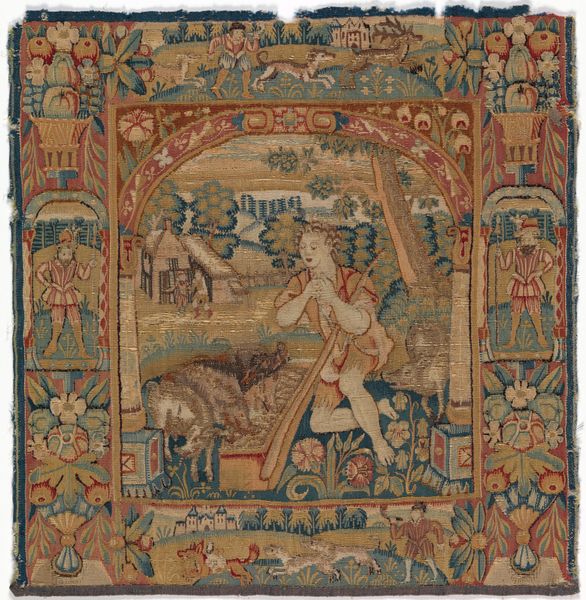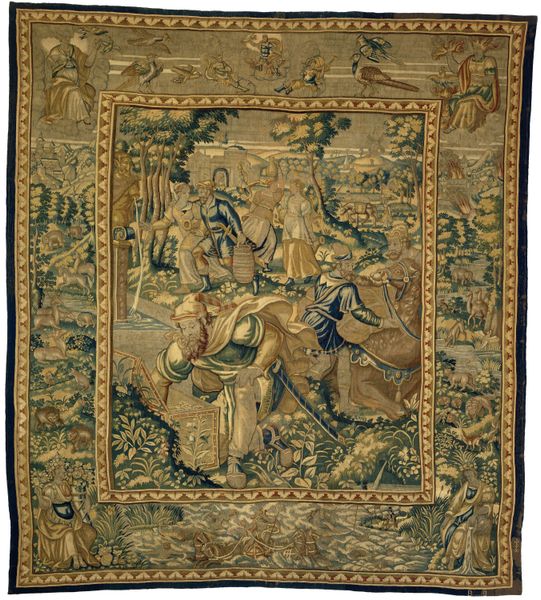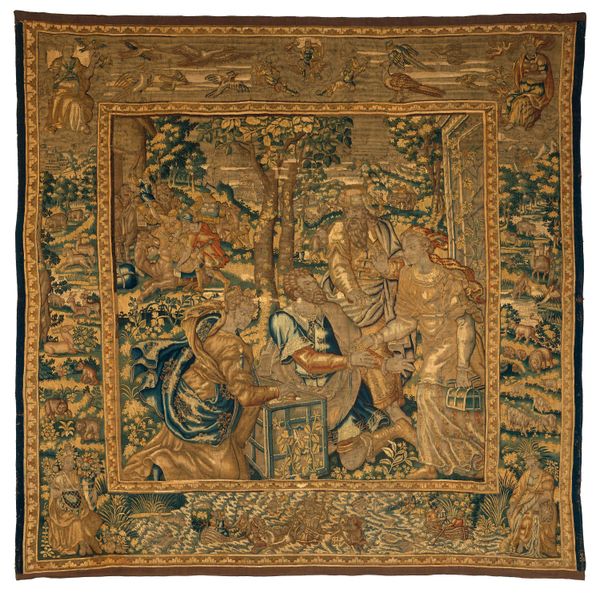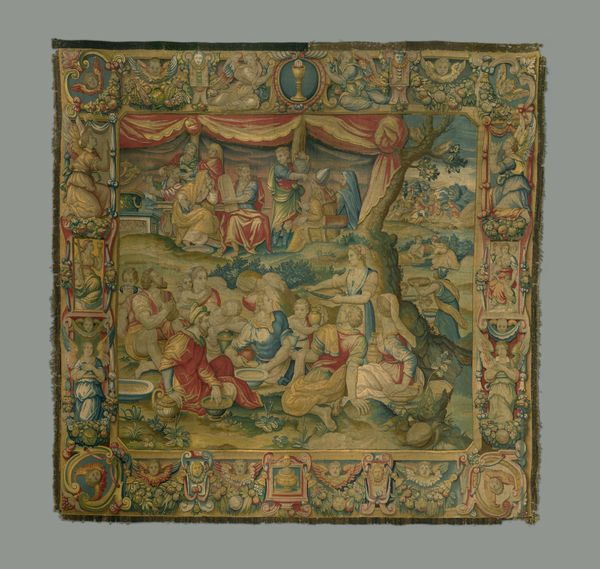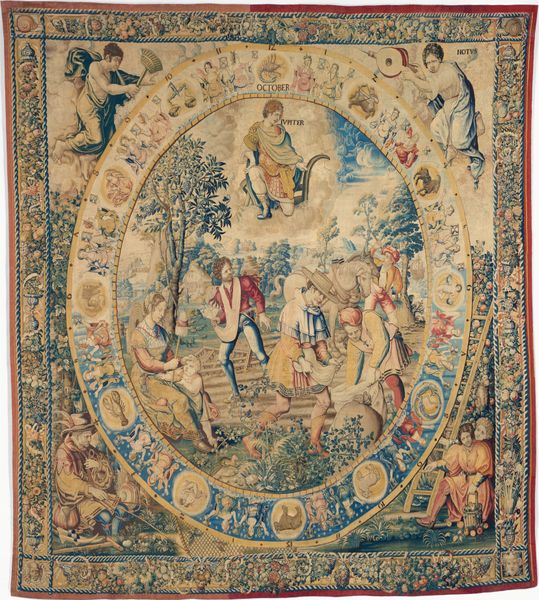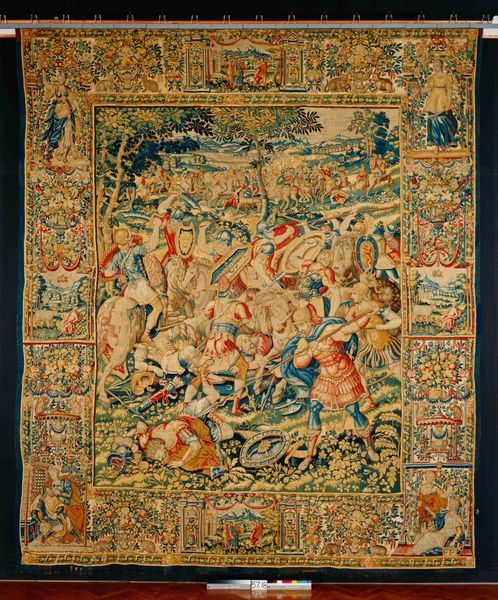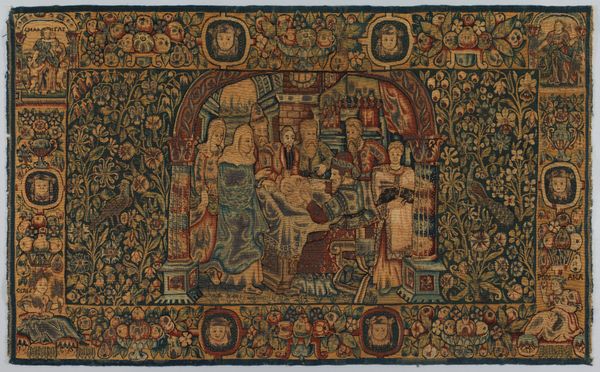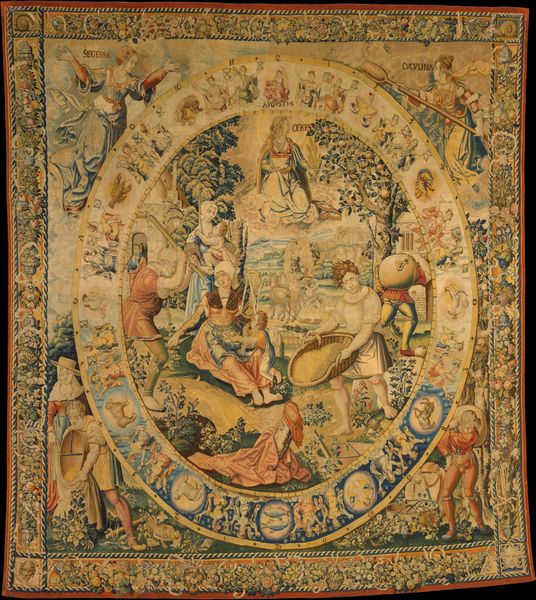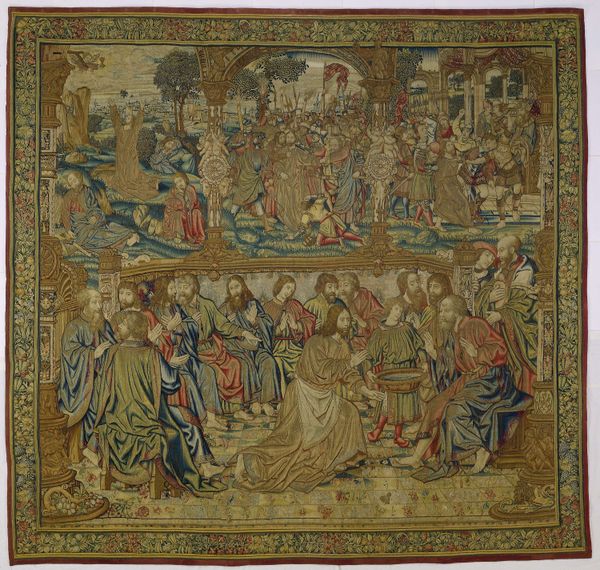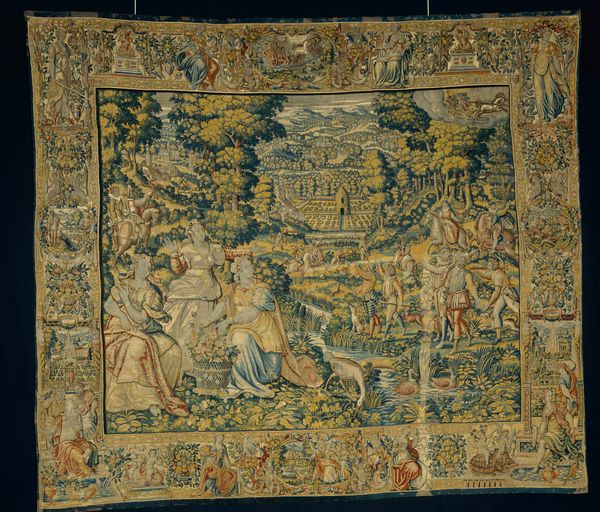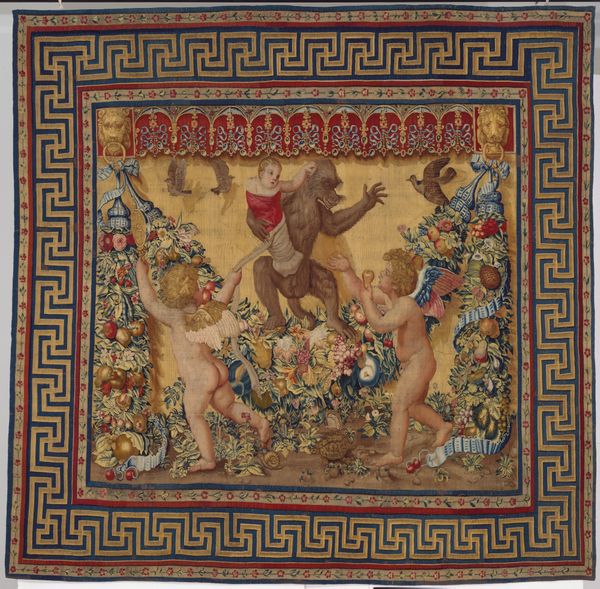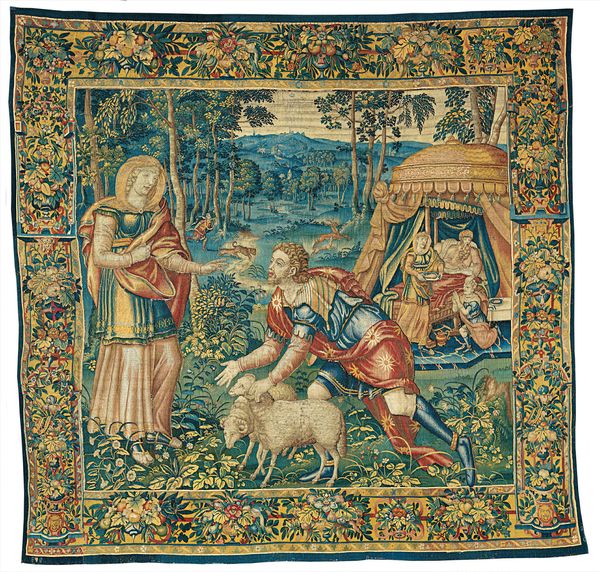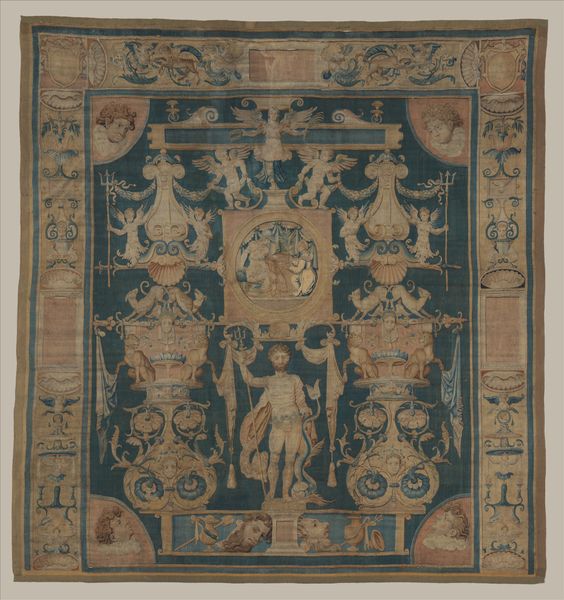
"The Prodigal Son Driven Out by Harlots" from a set of six of The Parable of the Prodigal Son 1600 - 1615
0:00
0:00
weaving, textile, sculpture
#
medieval
#
narrative-art
#
dog
#
weaving
#
textile
#
text
#
sculpture
#
men
#
wooden texture
#
history-painting
#
decorative-art
Dimensions: H. 20 x W. 20 inches (50.8 x 50.8 cm)
Copyright: Public Domain
Editor: Here we have a textile piece, specifically a section of tapestry, titled "The Prodigal Son Driven Out by Harlots," part of a series illustrating the Parable of the Prodigal Son. It was created sometime between 1600 and 1615 by an anonymous artist. It strikes me as incredibly chaotic; there's so much going on within this small space. What stands out to you as you view this work? Curator: Oh, it’s a wild, woven world, isn’t it? Look at the borders – not just decorative but miniature stages, teeming with life! It feels like a dreamscape, a fragmented memory of the parable. That central scene, the expulsion, is almost… operatic, wouldn’t you say? It’s as if the weavers themselves are wrestling with the story, each thread a little thought or feeling. What do you think it means that this crucial moment, the “driving out,” is captured rather than his repentance or return? Editor: That's a great point! Maybe it speaks to the immediate consequences of bad decisions? We see the prodigal son actively being rejected, his life falling apart right before his eyes. Do you think the animals woven into the tapestry also carry some symbolic weight? Curator: Animals! Absolutely! Dogs chasing – desire? Betrayal? The whole piece hums with barely controlled passions. It’s less a straightforward biblical illustration and more an… earthy meditation on morality. It makes me wonder about the artist. Was she perhaps poking a little fun at the judgmental, self-righteous characters? The abundance and decay… it’s intoxicating, don't you think? Editor: I never considered that aspect. The way the weavers composed this tapestry gives a real voice to the rejected people from the Bible. That is such an inspiring viewpoint to consider! Curator: Absolutely. This tapestry offers an introspective, reflective window into our interpretations.
Comments
No comments
Be the first to comment and join the conversation on the ultimate creative platform.
